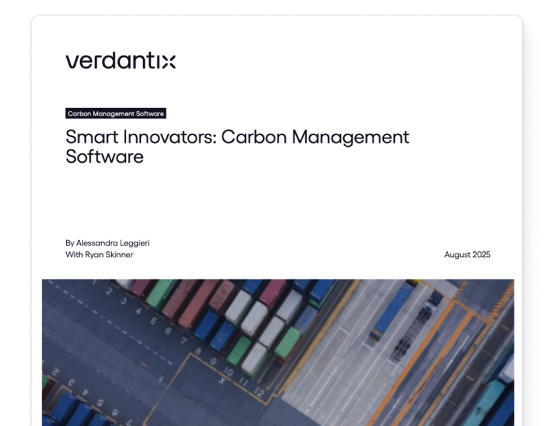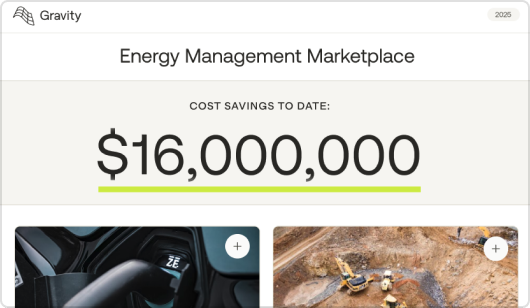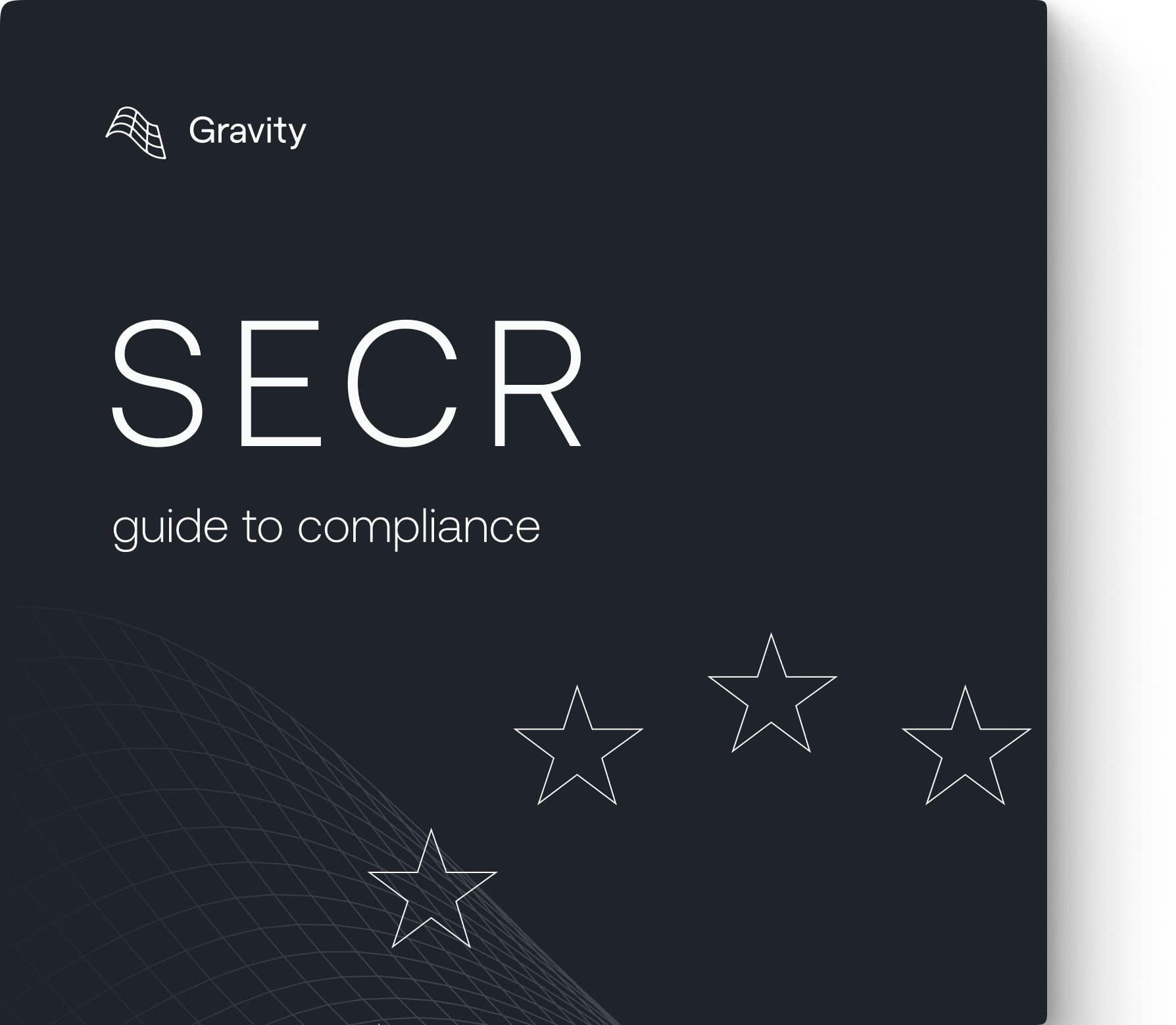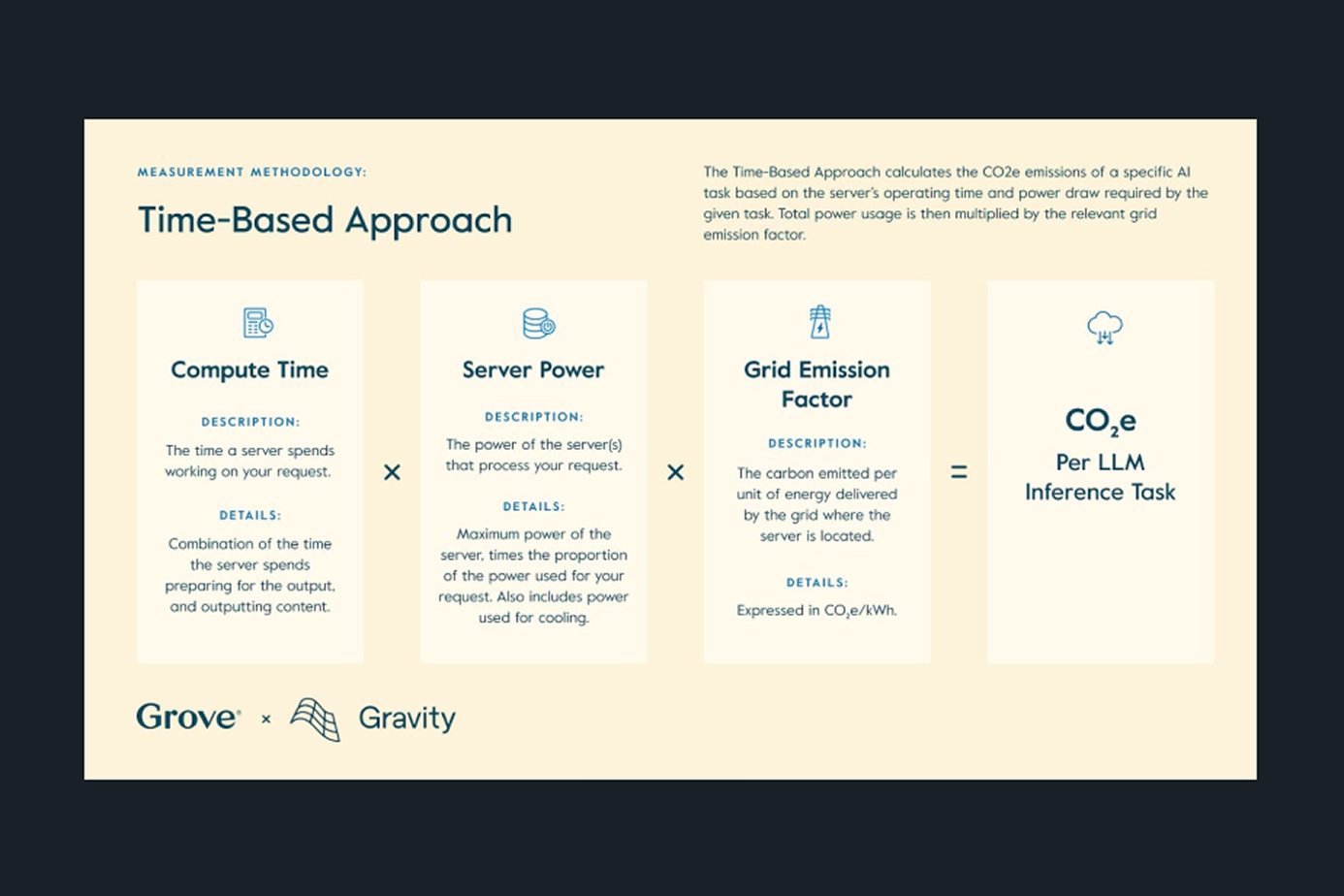See why customers are switching to Gravity
The Rise of Scope 3 Climate Commitments
Corporate climate commitments are evolving rapidly. How can you meet them credibly? Read on to understand the rise of Scope 3 requirements and how your company can meet them with ease.

Commitments by companies to address their impacts on the planet’s climate have skyrocketed in recent years. Almost 20,000 companies disclosed their carbon emissions to the non-profit disclosure system CDP last year, representing half of global market capitalization and a 38% increase over 2021. Almost 40% of companies in the Fortune Global 500 have set a net zero emissions target and over 550 financial institutions have committed to aligning their work with a net zero economy.
Powerful global trends are at the root of increasing climate commitments. Consumers, employees, investors, and other stakeholders increasingly expectclimate action of companies. Regulatory regimes worldwide are converging on mandatory emissions disclosure rules (such as the US SEC’s proposed rule and California’s Climate Corporate Data Accountability Act) or carbon border tariffs (such as the EU’s Carbon Border Adjustment Mechanism).
Beyond this pressure, executives are increasingly understanding sustainability as good for business, as green credentials help win new customers, lower energy costs, and boost the bottom line. In a recent EY survey, sustainability is now the top investment priority for CFOs; it comes in at number two for procurement executives, per Deloitte.
Yet despite their rapid expansion and the solidity of the trends driving them, the landscape of corporate climate commitments is increasingly fraught with turbulence. Most dramatically, legal action concerning company pledges (or lack thereof) is proliferating. Delta Air Lines, for instance, confronts a $1 billion lawsuitover its effort to become carbon neutral. BNP Paribas is being sued for alleged inconsistency between its climate claims and business practices.
Lawsuits are an extreme example of more generalized criticism of “greenwashing” – the charge that companies’ climate credentials are exaggerated, hollow, or worse. Per a Fidelity survey, 60% of sustainability experts don’t think companies’ commitments are backed by proportionate action. Less than 1% of companies disclosing emissions through the CDP meet the organization’s definition of a credible transition plan to meet their climate commitments. Further, hardly a week goes by without another study debunking the tool most commonly brandished for achieving commitments, carbon offsets.
Corporate climate commitments, then, are at a crossroads: Even as they have achieved unprecedented spread, they’ve never attracted greater scrutiny, skepticism – even cynicism. Why has this come to be? Is there anything to be done, or are companies doomed to surrender the ambition of their commitments?
This article begins a new series in which Gravity Climate dives deeply into the nature of corporate climate commitments and articulates our view on how they can be credibly met.
We begin by surveying the rapid evolution in this landscape, focusing on the nature of the targets to which companies are committing. While there’s never been more consensus that companies should cut emissions, there are important differences in the goals companies are setting. Still, there is a general convergence around shared best practices. We highlight, in particular, a remarkable development among leading companies’ commitments: the inclusion of not only emissions from a company’s own operations, but those of its value chain partners as well (Scope 3 emissions).
In the following articles, we will turn our attention to how companies are reducing emissions, delineating the drawbacks of certain approaches and proposing a better model for both companies and the climate.
Mapping Climate Commitments
When a company commits to reduce its greenhouse gas emissions, what, precisely, is it committing to? Even companies united in many characteristics, like size and industry, diverge in their answers to this question. Although global standards bodies are coalescing around more standardized commitments, there remains a large diversity of corporate commitments.
Almost all such commitments include three core components, but the details of these components can vary widely.
Coverage
Since the late 1990s, the GHG Protocol has been the guiding methodology for understanding a company’s emissions impact on the environment. The Protocol’s concept of emissions “Scopes,” or broad categories of emissions, provides a helpful way of classifying the coverage of corporate climate commitments.
The GHG Protocol directs companies to account for the emissions stemming from their direct operations, called Scope 1. This includes burning fuel in company vehicles or other mobile equipment, on-site boilers and generators, and emissions from processing materials. Scope 2 emissions are also related to a company’s operations, but one step removed; they cover the impact on the climate associated with generating the electricity a company purchases.
Some companies don’t specify what they are reducing, and the absence of quantified coverage is an indication they are earlier on their climate journey. Committing to reduce your Scope 1 and 2 emissions is the first rung of a corporate climate commitment. For example, Honeywell has committed to carbon neutrality in Scope 1 and 2 emissions by 2035 (and, later, is planning to set a Scope 3 target). Waste Management has committed to reducing Scope 1 and 2 emissions 42% by 2031 (It’s worth noting that, unlike most companies, WM’s Scope 1 emissions comprise the majority of their total emissions, at 90%.)
Increasingly, companies are going beyond the emissions of their own, direct operations, and including those of their value chain partners in their reduction commitments. The GHG Protocol has long encouraged companies to account for these “Scope 3” emissions – emissions from suppliers, logistics providers, and others that occur as a consequence of the company’s dealings with them.
At Nestlé, for instance, 95% of their emissions come from the value chain – especially in logistics and agriculture – so their reduction targets include all Scopes. Netflix has committed to reducing its Scope 1 and 2 emissions by 46% by 2030, and the intensity of its Scope 3 emissions 55% by 2030.
As the frontier of Scope 3 reduction commitments expands, leading companies have sharpened their Scope 3 action to include more specific goals for their suppliers. Apple, for instance, has committed to using 100% renewable energy for all manufacturing production of Apple products by 2030. HP has helped 20 of their 30 largest suppliers set targets of their own. Rivian and Polestar have committed to engaging with and decarbonizing the broader automotive manufacturing supply chain as a key priority.
Quantity (How Much Is Being Reduced?)
Besides specifying which categories of emissions they are committing to reducing, most climate commitments also specify how much emissions they intend to reduce.
Companies earlier in their climate journey may disclose no quantifiable target. Or, in the words of Coca-Cola HBC Group Sustainability Manager Galya Tsonkova, companies historically “would just pick a round figure and aim for cuts of 20, 30, 40 percent, with no further justification, other than generic aspirations.”
Increasingly, though, companies are selecting an emissions reduction quantity consistent with what the latest scientific understanding of the reduction needed to stave off the worst of climate change. The key guidance here is that of the Science Based Targets Initiative (SBTi).
The SBTi is an NGO that translates the findings of such bodies as Intergovernmental Panel on Climate Change into terms relevant at the company level. The methodology starts from what global, aggregate emissions reductions are necessary to limit global warming to 1.5°C (a key threshold settled during the 2015 Paris Agreement), and then works backward to determine what this means for individual companies in different sectors. Their guidance has proven highly influential; over 6,000 companies have committed to publishing SBT-aligned targets.
SBTi-aligned companies can optionally commit to reaching “net zero” emissions. The language of “net zero” or “carbon neutrality” has grown in prominence in recent years, to the extent that they have become almost synonymous with climate action, but these terms refer to a technical component of ambitious climate commitments. Namely, companies commit to reduce their emissions as much as they can, and purchase offsets or otherwise compensate for what they don’t reduce in an effort to completely “balance out” their climate impact.
One other nuance relating to the quantity of emissions reduction is the idea of “absolute” versus “intensity-based” reduction targets. An absolute target obliges a company to reduce its emissions by a set amount, whereas an intensity-based target normalizes the specified reduction to some company metric, like emissions/product or emissions/dollar revenue. Unilever, for example, has set an intensity-based target to halving the value chain emissions of their products on a per consumer use basis by 2030 against a 2010 baseline.
Timescale (Along What Time Horizon?)
The final dimension of a climate commitment we highlight is the timescale – that is, the target years companies set themselves by which to achieve their specified reduction.
At the least ambitious end of the spectrum, some companies don’t commit to any particular time horizon, perhaps only saying they’ll reduce their emissions “in the future” or “in time.”
Increasingly, however, companies are committing to making quantifiable reductions along a specific timeframe – by a certain year. As in the above dimension, the best practice for reduction time horizons comes from the SBTi, which recommends both a near-term and long-term reduction commitment.
Near-term targets consist of pledged emissions reductions within the next 5-10 years, usually by 2030. These are meant to drive urgency, and reflect the fact that the later an entity waits to cut emissions, the worse the impact on the climate. Long-term targets set the ultimate date by which the company will reach net zero emissions. These typically aim for 2050, though some ambitious companies are pushing this forward to 2040 or even, in the case of Microsoft, to 2030.
Climate Commitment Trends: The Evolving State of the Art
There are other nuances to explore in how corporate climate commitments diverge, from the inclusion of product-lines in reduction targets to temperature alignment pathways. But even at the level of focus of this article, we can see several clear trends.
Scope 3 Explosion
Perhaps the defining feature of the landscape of corporate climate action in the past several years has been the expansion of Scope 3 commitments. From 2021 to 2022, commitments to reduce Scope 3 emissions among companies with net-zero targets jumped from 13% to 27%.
Why the uptick? For one thing, corporate sustainability departments appear to be reaching a coming-of-age moment. Many organizations have matured enough to have measured Scope 3 for several years, and perhaps feel more confident setting targets that cover the value chain.
There’s also a compelling logic for companies committed to science-aligned ways of addressing their impact on the climate. Value chain emissions typically dwarf direct emissions; across industries, Scope 3 comprises an average of 75 percent of total emissions (Scope 1-3). So despite Scope 3’s reputation for complexity, leading companies have no choice but to adopt Scope 3 as the gold standard of commitment.
Moreover, regulators and standards bodies have mandated or strongly encouraged including Scope 3 emissions. California’s new emissions disclosure rule requires companies with >$1 billion revenue that do business in the state to report emissions across all Scopes. This summer, the International Sustainability Standards Board released new guidance for corporate sustainability – the culmination of worldwide efforts to harmonize different reporting frameworks – which includes Scope 3 emissions. This guidance is already proving the default regulatory template, with major national bodies in the UK, Singapore, Japan, as well as global stock exchange regulators, endorsing the rules.
The general trend is clear: companies increasingly recognize the importance of mitigating the carbon associated with their supply chain.
Pressure at Both Ends of the Value Chain
Industries closest to consumers (and their increasing green preferences) tend to have sophisticated climate commitments, and are well represented in CDP disclosures and SBTi-approved target lists. Many services, technology, and automotive companies, for instance, have consolidated around the need for not only Scope 1 and 2 measurement and reduction, but Scope 3 as well.
This helps explain rising pressure in manufacturing supply chains, the industry with the second highest number of companies with SBTi-approved targets. Consumer-facing brands are increasingly pressuring their supply chains into action, and those manufacturing supply chain participants recognize the value of climate action to their customer relationships.
Consumer-facing companies setting ambitious value-chain-wide climate commitments make sense from the perspective of impact as well as consumer interest. These companies tend to do little direct emitting; reducing their impact is overwhelmingly a question of reducing emissions in the supply chain, so it’s no surprise Scope 3 figures so prominently.
At the other end of the value chain, many commodities and materials companies have mature climate programs, and in some cases commitments. Many of these industries are covered by mandatory emissions tracking regulations (e.g., the US EPA’s Greenhouse Gas Reporting Program). As firms in such industries as mining, oil and gas, and other energy companies develop commitments in line with the evolving state-of-the-art, reducing Scope 1 typically figures front and center, due to their higher ratio of Scope 1 to Scope 3 emissions.
There remains a vast frontier of companies between these poles (as well as at each end) that haven’t yet prioritized climate action beyond a few first-movers.

Looking Ahead: The Question of Credibility
The private sector is rallying around climate action, and there is much to celebrate in the rapid rise of commitments to address companies’ impact on the climate. Companies are coalescing around a shared set of standards for measuring and reducing their greenhouse gas emissions. Nowhere is the ambition as clear as in commitments to reduce value chain emissions, or Scope 3 – the emergent gold standard for leading companies.
In this corner of the corporate world, attention is turning squarely to executing against the climate pledges to which they have publicly committed. It’s natural, then, to ask: How’s it going? How are companies planning to reduce emissions in their own operations as well as within the operations of their value chain partners?
In the next article in this series, we explore what tools are available, and how these bear on the prognosis for meeting corporate climate commitments. One point that will emerge is that the standards for setting climate commitments are far more mature than are practices for achieving them. While understandable – this is new, difficult terrain – the gap between commitments and plans poses a question of credibility that is a main driver of the growing scrutiny and controversy surrounding corporate climate action.
Download the report to learn more
VerdantixTM Smart Innovators: Carbon Management Software

Curious about Gravity's Energy Management Marketplace?
Book a demo to learn more

Curious about Gravity's Europe expansion?
Book a demo to learn more
.png)
Ready to get off the merry-go-round?
Book a demo to learn more.

Curious about Gravity's CDP accreditation?
Book a demo to learn more.

California's Carbon Reporting Rule
Watch our webinar to prepare for California's new climate regulation

Curious about these features?
Book a demo to learn more.

Be prepared for SECR
Meet with our team, walk through the steps you'll need to take to report, and start a free trial to see how Gravity can help you report with greater speed and accuracy.

See the platform in action
Watch a short video to see why leaders like WM, TTI, and WAF have chosen to work with Gravity to simplify carbon accounting and drive business impact.

Meet with our team, walk through the steps you'll need to take to report, and start a free trial to see how Gravity can help you report with greater speed and accuracy.

Cut down reporting time by 70%
Request a demo to see these features in action and learn how they can save hours of manpower in your next reporting cycle.
Looking to Uplevel Your Sustainability Programs in 2025?
Reach out for a personalized meeting with our climate experts to find opportunities to save time on regulatory compliance, simplify internal communications, and execute projects that deliver real business impact.
Find energy efficiency projects that deliver value
Learn how to reduce energy costs and emissions.

Be prepared for the CSRD
Get in touch to find out how your company should prepare for the CSRD amidst changes to the regulation.




%20(1).png)